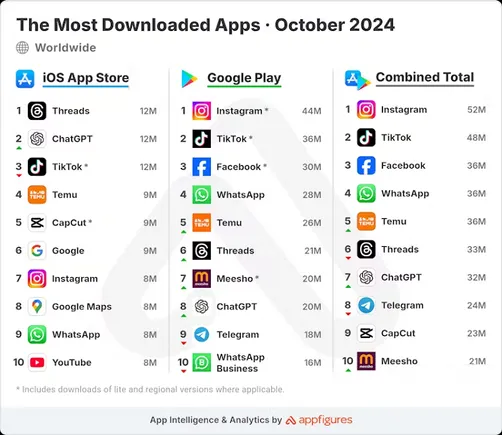For small and medium-sized businesses (SMBs), the path to effective marketing is often obstructed by a critical challenge—understanding their audience. Imagine crafting what seems like a stellar marketing campaign only to witness it fall short of expectations. This struggle is not uncommon, and for SMBs, the stakes are high. Without a profound understanding of their audience, marketing efforts can miss the mark, leading to missed opportunities and wasted resources.
In today’s dynamic market, demographics alone don’t cut it. The key lies in unraveling the intricate layers of your audience’s psychographics, motivations, and preferences. Savvy CMOs that grasp this complexity gain a strategic advantage, creating connections that foster engagement and loyalty.
This exploration delves into the art of audience understanding, offering actionable insights for SMBs, CMOs and Fractional CMOs. Join us on a journey to unlock the secrets that can transform your marketing approach, providing the edge your SMB needs for sustained growth. Are you ready to connect with your audience in ways that truly matter? Let’s begin the quest for marketing success by unraveling the mysteries of audience dynamics.
What we’re covering here:
Unveiling Audience Dynamics: Beyond Demographics
Understanding your audience goes far beyond recognizing their age, location, or gender. While demographics offer a broad outline, the intricacies lie in psychographics—the study of attitudes, interests, and behaviors that shape consumer decisions.
- Psychographics: The Heart of Understanding
To truly know your audience, delve into their psychographics. What are their values, interests, and lifestyle choices? Uncover the emotional triggers that influence their decisions. For instance, knowing that your audience values sustainability or seeks convenience can shape your messaging and offerings.
- Behavioral Patterns: Decoding Actions
Actions speak louder than words, especially in the realm of marketing. Analyze the behavior of your audience—online and offline. Track their interactions with your brand, from website clicks to social media engagement. By understanding their digital footprint, you can tailor your marketing strategies to align with their preferences.
- Communication Preferences: Speak Their Language
The way your audience consumes information varies. Some may prefer informative blog posts, while others engage better with visual content. Identify the channels and formats that resonate with your audience. Whether it’s through social media, email newsletters, or podcasts, adapting your communication style enhances connection.
- Motivations and Pain Points: Addressing Needs
What motivates your audience, and what challenges do they face? Understanding their aspirations and pain points empowers your marketing strategy. Craft messages that resonate with their goals and offer solutions to their challenges. This empathetic approach builds trust and loyalty.
In unraveling these layers, SMBs gain a nuanced perspective that guides personalized marketing strategies. By moving beyond demographics and into the realms of psychographics, behavior, communication preferences, and motivations, businesses can tailor their approach to create meaningful connections with their audience.
Understanding your audience is the cornerstone of successful marketing, and creating buyer personas is a powerful way to achieve this understanding. Let’s dive into a practical guide enhanced with examples and tools to help you craft impactful buyer personas:
Research and Data Collection: Uncover Insights
Start by using tools like Google Analytics, CRM data, and social media analytics to gather quantitative data. For qualitative insights, conduct surveys or interviews. Tools like Typeform or SurveyMonkey can facilitate this process. The example below illustrates how a fitness equipment SMB might approach data collection:
Example: Use Google Analytics to identify the age groups and geographic locations of your website visitors. Combine this with a survey asking about fitness preferences to gather comprehensive insights.
Identify Pain Points and Goals: Understand Motivations
Tools like heatmaps (such as Hotjar) can reveal user behavior on your website, while social listening tools like Brand24 can uncover conversations around pain points. For our fitness equipment SMB, identifying the common goal of staying fit could look like this:
Example: Analyze Hotjar Heatmaps to see which website sections users frequent. Use Brand24 to monitor social media for discussions on fitness challenges.
Segmentation: Different Strokes for Different Folks
Use CRM tools to segment your existing customers based on shared characteristics. For instance, HubSpot or Constant Contact can help create segmented lists. Here’s an example for a software development SMB:
Example: In HubSpot, create segmented lists for users interested in web development and those interested in mobile app development. That’s accomplished by sharing resources in an email and tagging everyone who clicks on a resource as being interested in that topic.
Create Detailed Persona Profiles: Adding Depth
Persona creation tools like HubSpot or Xtensio can assist in building comprehensive profiles. For our fitness equipment SMB, a detailed persona might look like this:
Example: Use Xtensio to create a visual persona profile named “Fitness Enthusiast Emma,” including details on her fitness journey, preferences, and challenges.
Align with Marketing Goals: Connecting Personas to Strategy
Tools that integrate with your marketing goals, such as Google Analytics or Agorapulse for social media management, can be invaluable. The following example showcases how our fitness equipment SMB might align personas with goals:
Example: Create separate social media content schedules on Agorapulse targeting different personas. Measure the impact on website visits using Google Analytics thanks to Agorapulse’s built-in UTM parameters and link tracking.
Regular Updates: Stay Current
Keep personas dynamic with tools like Semrush or SimilarWeb, which provide insights into evolving market trends. For our fitness SMB, staying updated might involve the following:
Example: Use Semrush to identify trending fitness keywords. Adjust persona preferences based on emerging fitness trends.
Crafting buyer personas is an ongoing journey that blends creativity with data-driven insights. By incorporating practical examples and leveraging tools, your SMB can create personas that resonate with your audience, driving more effective and targeted marketing strategies.
Leveraging Data for Deeper Insights
Data serves as a goldmine of insights that can guide your strategies. Let’s explore how SMBs can effectively leverage data to gain deeper insights into their audience:
Customer Relationship Management (CRM) Systems: Organizing Customer Data
Implement CRM systems like Salesforce or HubSpot to centralize customer data. For a tech services SMB:
Example: Use Salesforce to track customer interactions, segment audiences, and monitor engagement. Having a comprehensive view of customer data enables targeted strategies.
Social Media Analytics: Understanding Audience Behavior
Leverage social media analytics tools such as Agorapulse. For a lifestyle brand, these tools offer insights into audience preferences:
Example: Use Agorapulse to analyze social media engagement metrics. Identify popular content, peak engagement times, and sentiments to tailor future posts.
Email Marketing Metrics: Refining Communication Strategies
Explore email marketing analytics using platforms like Constant Contact. This allows you to refine communication strategies. In the case of a tech services SMB:
Example: Utilize Constant Contact analytics to track email open rates, click-through rates, and subscriber behavior. Adjust content based on what resonates with your audience.
Website Analytics: Tracking User Behavior
Employ website analytics tools like Google Analytics or Hotjar. For our lifestyle brand, these tools offer insights into user behavior:
Example: Use Google Analytics to assess website traffic, popular pages, and user interactions. Identify high-performing content and optimize the website for better user experience.
Surveys and Feedback Forms: Direct Audience Input
Implement surveys and feedback forms to directly collect insights from your audience. Tools like SurveyMonkey or Typeform can facilitate this:
Example: Create a Typeform survey to gather feedback on product preferences from the lifestyle brand’s audience. Understand their desires and tailor offerings accordingly.
Heatmaps: Visualizing User Interactions
Utilize heatmap tools like Hotjar to visualize user interactions on your website. This is particularly valuable for a tech services SMB:
Example: Implement Hotjar to generate heatmaps showing where users click, scroll, or spend the most time. Optimize website layout based on user behavior patterns.
Competitor Analysis Tools: Benchmarking Strategies
Leverage competitor analysis tools like SEMrush or Ahrefs to benchmark your strategies. For a lifestyle brand, understanding competitor trends is crucial:
Example: Use SEMrush to analyze competitors’ content strategies and keyword rankings. Identify gaps or opportunities to differentiate your brand’s approach.
By integrating these data-driven approaches into your marketing efforts, your SMB can uncover valuable insights that shape informed decisions. The strategic use of data ensures that your marketing initiatives resonate with your audience, driving engagement and contributing to long-term success.
The Power of Customer Feedback: Turning Insights into Action
Understanding your audience goes beyond data analytics—it involves listening to the voice of your customers. Here, we’ll delve into the significance of customer feedback and how SMBs can transform these insights into actionable strategies.
Active Listening on Social Media Platforms Leverage social media platforms as active listening channels. Regularly monitor comments, messages, and mentions. For a tech services SMB:
Example: Actively listen to customer queries on Twitter and engage in conversations. Identify recurring themes or concerns to address in your content and support materials.
Customer Surveys: Tailoring Experiences Implementing customer surveys is a direct way to gather feedback. Tools like SurveyMonkey or Google Forms can aid in this process. For a lifestyle brand:
Example: Create a post-purchase survey asking customers about their experience. Use feedback to tailor future offerings and improve the overall shopping experience.
Feedback Loops in Email Marketing
Establish feedback loops within your email marketing strategy. Encourage subscribers to share their thoughts. For a tech services SMB:
Example: Include a feedback section in your email newsletters, prompting readers to share opinions on content or suggest topics. Use this input to refine your content strategy.
Online Reviews and Testimonials: Building Trust Monitor online reviews and testimonials. Platforms like Yelp or Trustpilot can provide valuable insights. For a lifestyle brand:
Example: Regularly check customer reviews on platforms like Amazon. Identify common themes in positive and negative reviews to enhance product offerings and customer satisfaction.
Customer Service Interactions: Extracting Insights Analyze interactions through customer service channels. Insights from conversations can shape marketing strategies. For a tech services SMB:
Example: Review customer service logs for common issues or inquiries. Address these topics proactively in marketing content to alleviate customer concerns.
Web Analytics for User Behavior Utilize web analytics to understand user behavior. Identify patterns that indicate positive or challenging experiences. For a lifestyle brand:
Example: Analyze bounce rates and time spent on pages. Optimize web design based on user behavior to enhance the overall browsing experience.
Community Forums and Groups: Fostering Dialogue Engage with customers in community forums or groups related to your industry. Actively participate in discussions. For a tech services SMB:
Example: Join relevant LinkedIn groups or forums where your target audience discusses industry trends. Use insights gained to shape thought leadership content.
By embracing customer feedback as a guiding force, SMBs can bridge the gap between data-driven analytics and the human aspects of consumer interaction. Turning insights into action involves a commitment to listening, responding, and continually evolving to meet customer expectations. This customer-centric approach positions your business for sustainable growth and a loyal customer base.
Adapting Content Strategies to Audience Preferences
Tailoring your content to align with audience preferences is paramount for effective communication. Here, we explore strategies to adapt your content approach, ensuring it resonates with your target audience.
Content Personalization: A Customized Experience Embrace content personalization by creating tailored experiences for different audience segments. For a tech services SMB:
Example: Develop personalized email campaigns based on customer preferences. Segment your audience and deliver content that speaks directly to their interests.
Diversifying Content Formats Recognize that audiences consume content in various formats. Diversify your content strategy with a mix of blog posts, videos, infographics, and podcasts. For a lifestyle brand:
Example: If your audience responds well to visual content, consider creating product tutorial videos or lifestyle-based infographics to complement written content.
Optimizing for Mobile Audiences With the prevalence of mobile usage, ensure your content is optimized for smartphones and tablets. For a tech services SMB:
Example: Prioritize mobile-friendly design for your website and emails. Optimize content for shorter attention spans, making it easy for mobile users to engage.
Interactive Content for Engagement Foster engagement through interactive content. Quizzes, polls, and surveys can captivate your audience. For a lifestyle brand:
Example: Create interactive quizzes related to your product or industry. Encourage audience participation and share results to enhance engagement and social sharing.
Storytelling: Creating Emotional Connections Incorporate storytelling into your content strategy. Craft narratives that resonate emotionally with your audience. For a tech services SMB:
Example: Share success stories or case studies highlighting how your services have positively impacted clients. Use storytelling to humanize your brand and create relatable connections.
User-Generated Content: Building Community Encourage users to generate content by sharing their experiences. Leverage user-generated content to build a sense of community. For a lifestyle brand:
Example: Create branded hashtags and encourage customers to share photos or testimonials. Showcase this content on your platforms to foster a community-driven atmosphere.
Consistent Brand Voice Across Channels Maintain a consistent brand voice across all communication channels. This builds brand recognition and trust. For a tech services SMB:
Example: Develop brand guidelines outlining voice, tone, and messaging. Ensure consistency in social media posts, blogs, and customer communications.
A/B Testing for Optimization Implement A/B testing to refine your content strategy. Experiment with different approaches and measure audience responses. For a lifestyle brand:
Example: Test different headlines, images, or calls-to-action in your email campaigns. Analyze performance data to understand what resonates best with your audience.
Adapting content strategies to audience preferences requires a deep understanding of your target demographic. By employing personalization, embracing diverse formats, and maintaining a consistent brand voice, SMBs can create content that captivates and engages their audience. This adaptive approach positions your brand as responsive to customer needs and committed to delivering valuable, tailored experiences.
Audience Segmentation and Personalization: Elevating the Customer Experience
In the dynamic landscape of marketing, leveraging segmentation and personalization is key to delivering a tailored and memorable customer experience. Let’s delve into strategies that elevate the customer journey through effective segmentation and personalized interactions.
Understanding Segmentation Begin by understanding your audience and segmenting them based on shared characteristics, behaviors, or preferences. For a tech services SMB:
Example: Segment your audience into categories such as industry type, company size, or service preferences. This enables targeted messaging and personalized communication.
Personalizing Email Campaigns Harness the power of personalized email campaigns to engage your audience on an individual level. For a lifestyle brand:
Example: Tailor email content based on customer preferences and past interactions. Use personalized subject lines and recommendations to increase open rates and conversions.
Dynamic Website Content Implement dynamic content on your website that adapts based on user behavior and preferences. For a tech services SMB:
Example: Showcase different service offerings or case studies based on the visitor’s previous interactions. This enhances relevance and captures attention more effectively.
Behavioral Targeting in Ads Utilize behavioral targeting in your advertising efforts to reach audiences interested in specific products or services. For a lifestyle brand:
Example: Run targeted social media ads based on user behavior, such as recent website visits or interactions. This ensures your ads are seen by users with a genuine interest.
Personalized Recommendations Offer personalized product or service recommendations to enhance the shopping experience. For a tech services SMB:
Example: Implement recommendation engines on your website, suggesting relevant services or resources based on the user’s browsing history or preferences.
Geographic and Demographic Segmentation Tailor your marketing efforts based on geographic and demographic data. This ensures relevance to diverse audience segments. For a lifestyle brand:
Example: Create location-specific promotions or content that resonates with the cultural preferences of different demographics within your target audience.
Customized Loyalty Programs Develop loyalty programs that are customized to individual customer behaviors and preferences. For a tech services SMB:
Example: Offer personalized rewards or discounts based on the customer’s history of engagements and purchases. This fosters a sense of exclusivity and appreciation.
Personalized Content Experiences Create personalized content experiences by allowing users to customize their journey. For a lifestyle brand:
Example: Implement interactive tools or content hubs where users can choose the type of content they want to explore, tailoring their experience to their interests.
Segmentation and personalization go beyond mere marketing tactics; they form the foundation of a customer-centric approach. By understanding your audience’s unique needs and preferences, you can craft experiences that resonate, foster loyalty, and drive meaningful interactions.
In today’s digital age, social media listening has become a powerful tool for businesses aiming to understand and engage with their audience on a deeper level. Let’s explore the significance of social media listening and how it can be a game-changer for your SMB.
The Essence of Social Media Listening
Social media listening involves monitoring online conversations relevant to your brand, industry, or specific topics. It goes beyond tracking mentions of your brand and extends to understanding broader discussions and sentiments within your target audience.
Key Benefits of Social Media Listening
Understanding Audience Sentiment: Gain insights into how your audience perceives your brand, products, or industry.
Competitor Analysis: Keep tabs on competitors’ activities and gauge public reactions to their strategies.
Identifying Trends: Stay informed about emerging trends, topics, or issues that matter to your audience.
Customer Feedback: Capture and respond to customer feedback, concerns, or praise in real-time.
Utilizing Social Media Listening Tools
Several tools can aid in social media listening, providing valuable analytics and insights. While there are various options available, we’ll touch on the broader categories without specific endorsements:
Social Media Management Platforms: Tools like Agorapulse offer social listening features, allowing you to monitor brand mentions, track keywords, and analyze sentiment.
Dedicated Listening Tools: Platforms like Brandwatch, Mention, or Brand24 focus specifically on social media listening, offering advanced features for comprehensive analysis.
Google Alerts: A simple and free tool, Google Alerts notifies you when specific keywords or phrases are mentioned online, providing basic insights.
Implementing Social Media Listening Strategies
Define Your Objectives: Clearly outline what you aim to achieve through social media listening, whether it’s improving customer satisfaction, identifying market trends, or staying ahead of industry developments.
Select Relevant Keywords: Choose keywords, hashtags, and phrases that align with your brand and industry. This ensures that your social listening efforts are focused on the most relevant conversations.
Create Response Protocols: Develop protocols for responding to different types of mentions. Whether addressing customer complaints, participating in industry discussions, or acknowledging positive feedback, having response guidelines ensures consistency.
Turning Audience Insights into Action
Social media listening isn’t just about gathering data; it’s about translating insights into actionable strategies. Use the information gleaned from online conversations to refine your marketing approach, enhance customer experiences, and stay attuned to your audience’s evolving needs.
By actively engaging in social media listening, your SMB can gain a competitive edge, foster meaningful connections, and adapt swiftly to the ever-changing digital landscape. Harness the power of online conversations to propel your brand forward, making informed decisions that resonate with your audience.
Staying Agile: Adapting to Evolving Audience Trends
In the dynamic realm of digital marketing, staying agile is crucial for SMBs looking to adapt to evolving audience trends. Here, we delve into the importance of agility and strategies to keep your marketing efforts in tune with the ever-changing preferences of your audience.
The Need for Marketing Agility
As audience preferences and behaviors continue to evolve, rigid marketing strategies may fall short. Agility involves the ability to swiftly respond to emerging trends, capitalize on opportunities, and adjust strategies based on real-time data. In the fast-paced digital landscape, being agile is synonymous with staying relevant.
Strategies for Marketing Agility
Real-Time Monitoring: Leverage real-time monitoring tools to keep tabs on social media, news, and industry updates. This allows your SMB to identify trends as they emerge and respond promptly.
Data-Driven Decision Making: Base your marketing decisions on data insights. Regularly analyze performance metrics, customer feedback, and market trends to guide your strategy adjustments.
Flexible Content Planning: Adopt an iterative approach to content planning. Be ready to adjust your content calendar based on what resonates with your audience and aligns with current trends.
Agile Team Collaboration: Foster a culture of agility within your marketing team. Encourage open communication, idea sharing, and a willingness to adapt strategies based on collective insights.
Embracing Emerging Technologies
AI-Powered Analytics: Explore the capabilities of artificial intelligence (AI) in analyzing vast amounts of data to uncover hidden patterns and predict trends.
Voice Search Optimization: With the rise of voice-activated devices, optimize your digital content for voice search to align with changing search behaviors.
Immersive Technologies: Stay abreast of immersive technologies like augmented reality (AR) and virtual reality (VR) that may present new engagement avenues for your audience.
Adaptive Marketing Campaigns
Micro-Campaigns: Consider running smaller, targeted campaigns that can be adjusted quickly based on performance indicators.
User-Generated Content (UGC): Embrace UGC as it aligns with authentic trends driven by your audience. UGC can be a powerful tool for staying connected with evolving preferences.
Feedback Loops and Iteration
Establish robust feedback loops within your marketing strategies. Encourage customer feedback, monitor campaign performance, and use this information to iterate and enhance your approach continually.
Preparing for the Unpredictable
Acknowledge that not all trends are predictable. Allocate resources for experimentation and be prepared to pivot when unexpected opportunities or challenges arise.
By prioritizing agility in your marketing approach, your SMB can navigate the ever-shifting landscape, embrace emerging trends, and build a brand that resonates with the dynamic preferences of your audience. Staying agile isn’t just a strategy; it’s a mindset that positions your business for sustained growth in a rapidly changing digital ecosystem.
Common Pitfalls to Avoid: Missteps in Audience Understanding
While understanding your audience is a critical aspect of marketing success, certain pitfalls can hinder your efforts and lead to missteps. Recognizing and avoiding these common pitfalls is essential for SMBs aiming to build a deeper understanding of their audience. Let’s explore these pitfalls and how to navigate around them:
Assuming a Static Audience Profile
Pitfall: Assuming that your audience profile remains static can lead to overlooking evolving preferences and trends.
Solution: Regularly revisit and update your audience personas based on new data and feedback. Conduct periodic market research to identify shifts in behavior.
Overlooking Data Privacy Concerns
Pitfall: Neglecting data privacy concerns can erode trust with your audience, especially in an era where privacy is a top priority.
Solution: Prioritize data protection and transparently communicate your data usage policies. Obtain explicit consent for collecting and using customer data.
Ignoring Cultural Sensitivities
Pitfall: Failing to consider cultural sensitivities can result in marketing messages that are misunderstood or deemed inappropriate.
Solution: Conduct thorough cultural research and tailor your messaging to align with the cultural norms and sensitivities of your target audience.
Relying Solely on Quantitative Data
Pitfall: Overreliance on quantitative data without qualitative insights may lead to a superficial understanding of your audience.
Solution: Combine quantitative metrics with qualitative methods like surveys, interviews, and focus groups to gain a holistic view of your audience’s sentiments and motivations.
Neglecting Emerging Platforms and Channels
Pitfall: Failing to explore new platforms may result in missed opportunities to connect with evolving audience segments.
Solution: Stay informed about emerging platforms and trends. Experiment with new channels to understand where your audience is most engaged.
Overlooking Negative Feedback
Pitfall: Dismissing or ignoring negative feedback may contribute to a decline in audience satisfaction.
Solution: Embrace negative feedback as an opportunity for improvement. Address concerns openly and use feedback to refine your strategies.
Failure to Adapt to Audience Evolution
Pitfall: Not adapting to changes in audience preferences can lead to outdated marketing strategies.
Solution: Continuously monitor audience behavior, engage in ongoing research, and be prepared to adjust your strategies based on evolving trends.
Lack of Diversity in Audience Representation
Pitfall: Failing to represent the diversity within your audience can result in exclusionary marketing campaigns.
Solution: Ensure diverse representation in your marketing materials and content. Recognize and celebrate the diversity of your audience.
By steering clear of these common pitfalls, your SMB can foster a more nuanced understanding of your audience, strengthen relationships, and create marketing strategies that resonate authentically. Recognizing the dynamic nature of audience understanding is a crucial step toward sustainable growth and long-term success.
Harnessing Audience Insights for Business Success
In business, the ability to truly understand your audience becomes a linchpin for success. Armed with rich insights into preferences, behaviors, and aspirations, your SMB gains a competitive edge in tailoring strategies that resonate with authenticity. As we conclude our exploration of audience understanding, it’s crucial to underscore the transformative power of these insights.
By continually adapting to your audience’s evolving needs, your business not only meets expectations but also anticipates and exceeds them. Harnessing the data-driven wisdom gained from audience understanding allows you to craft personalized experiences, curate compelling content, and build lasting connections.
In a world where every interaction matters, businesses that invest in understanding their audience forge bonds that transcend transactional relationships. From avoiding common pitfalls to embracing emerging trends, the journey of audience understanding is a dynamic and ongoing process.
Elevate Your Strategy with a Fractional CMO
As you embark on the journey of refining your audience understanding, consider the invaluable role of a Fractional Chief Marketing Officer (fCMO). A seasoned marketing strategist, the Fractional CMO brings expertise in deciphering audience insights, shaping impactful strategies, and driving business growth.
Ready to transform your approach to audience understanding and marketing? Partner with me, your dedicated Fractional CMO, to unlock the full potential of your business. Let’s collaborate to elevate your brand, resonate with your audience, and chart a course for sustained success. Reach out today, and let’s embark on this transformative journey together.











